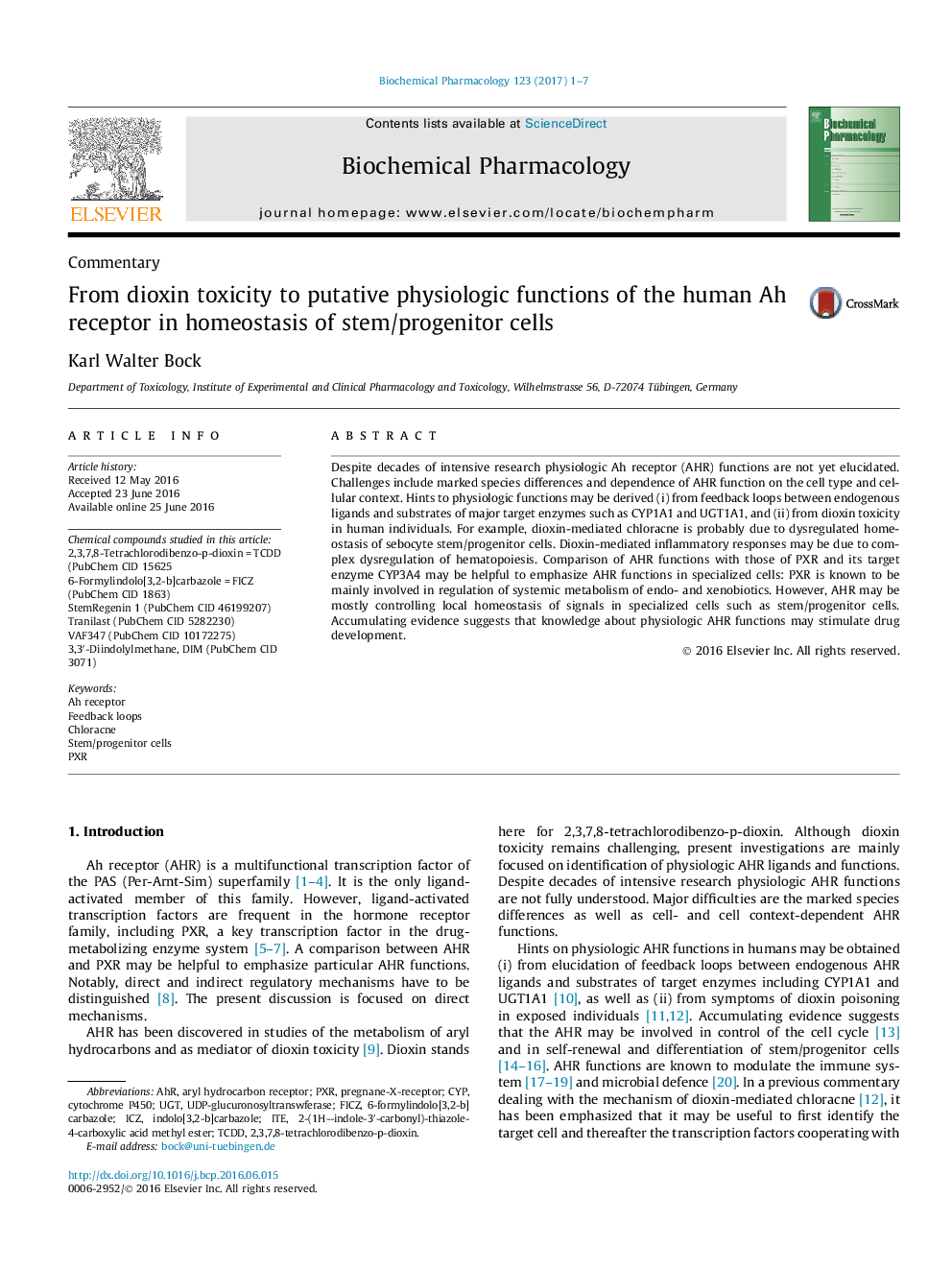| کد مقاله | کد نشریه | سال انتشار | مقاله انگلیسی | نسخه تمام متن |
|---|---|---|---|---|
| 5552369 | 1557890 | 2017 | 7 صفحه PDF | دانلود رایگان |

Despite decades of intensive research physiologic Ah receptor (AHR) functions are not yet elucidated. Challenges include marked species differences and dependence of AHR function on the cell type and cellular context. Hints to physiologic functions may be derived (i) from feedback loops between endogenous ligands and substrates of major target enzymes such as CYP1A1 and UGT1A1, and (ii) from dioxin toxicity in human individuals. For example, dioxin-mediated chloracne is probably due to dysregulated homeostasis of sebocyte stem/progenitor cells. Dioxin-mediated inflammatory responses may be due to complex dysregulation of hematopoiesis. Comparison of AHR functions with those of PXR and its target enzyme CYP3A4 may be helpful to emphasize AHR functions in specialized cells: PXR is known to be mainly involved in regulation of systemic metabolism of endo- and xenobiotics. However, AHR may be mostly controlling local homeostasis of signals in specialized cells such as stem/progenitor cells. Accumulating evidence suggests that knowledge about physiologic AHR functions may stimulate drug development.
161
Journal: Biochemical Pharmacology - Volume 123, 1 January 2017, Pages 1-7